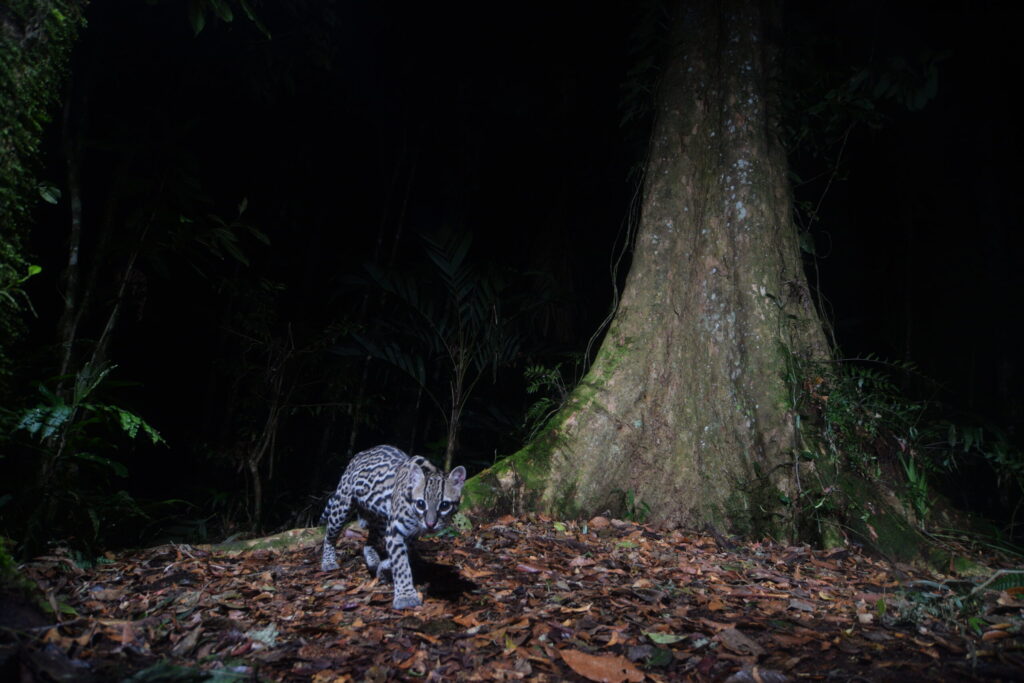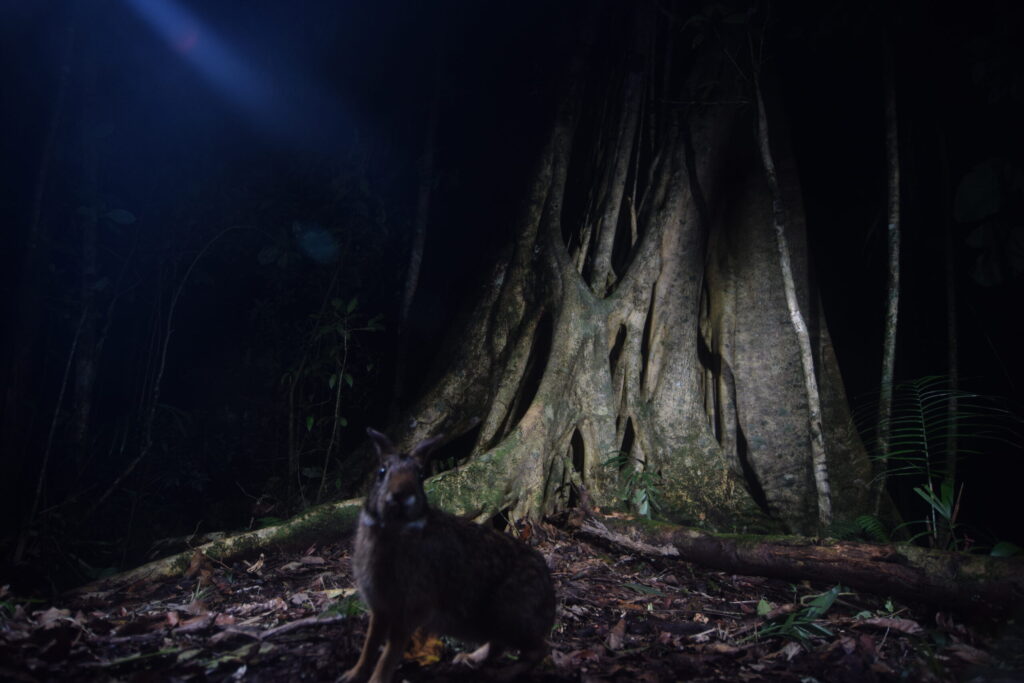
At Cloudbridge Nature Reserve, our camera trap network is a cornerstone of ongoing mammal research and biodiversity monitoring. Many mammal species within the reserve are elusive, primarily nocturnal, or actively avoid human presence. As a result, traditional observation methods often fail to detect them, creating significant data gaps. Camera traps provide a non-invasive solution, allowing us to document wildlife activity continuously, regardless of time of day, weather conditions, or observer presence.
By strategically placing camera traps along all major trail systems and in selected off-trail locations, we are able to systematically survey the mammalian community across a variety of habitats. This includes monitoring species within mature primary forest as well as in areas of secondary forest that were once pastureland. These long-term datasets are essential for understanding patterns of species presence, abundance, and habitat use.

Importantly, the camera trap project has enabled Cloudbridge to conduct several research initiatives focusing on mammalian ecology. These studies have examined topics such as species richness across habitat types, temporal activity patterns of carnivores and their prey, and the use of regenerating forest by medium- and large-bodied mammals. The resulting reports, available on our website, in the reports section, provide detailed analyses and findings generated from our long-term monitoring efforts.

A key outcome of this work has been the ability to document how mammals respond to forest regeneration. Camera trap records show species not only moving through but increasingly occupying areas that were once pastureland. These observations provide direct evidence of ecological recovery, revealing how mammals expand their range into younger secondary forest as the habitat improves. This pattern offers valuable insight into the success of our restoration efforts and highlights the resilience of the local fauna as the landscape continues to heal.

Through continuous monitoring, camera trap data help us track changes in the mammal community over time, identify rare or threatened species, and evaluate the effectiveness of conservation strategies. As the dataset grows, it becomes an increasingly powerful tool for both ecological research and adaptive management at the reserve.
And every now and then, this technology reveals something truly remarkable—something extraordinary showed up on our cameras this month, so watch the video to find out what!
If you’d like to see more hidden wildlife moments like this, make sure to follow us on our social media channels for all our latest camera trap captures.

Wow! Fabulous to see that beautiful ocelot – and then the cougar cubs! Thank you for sharing. Ian would be so thrilled.